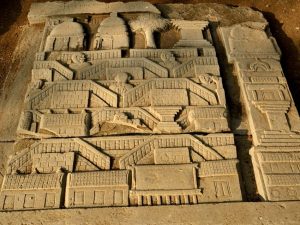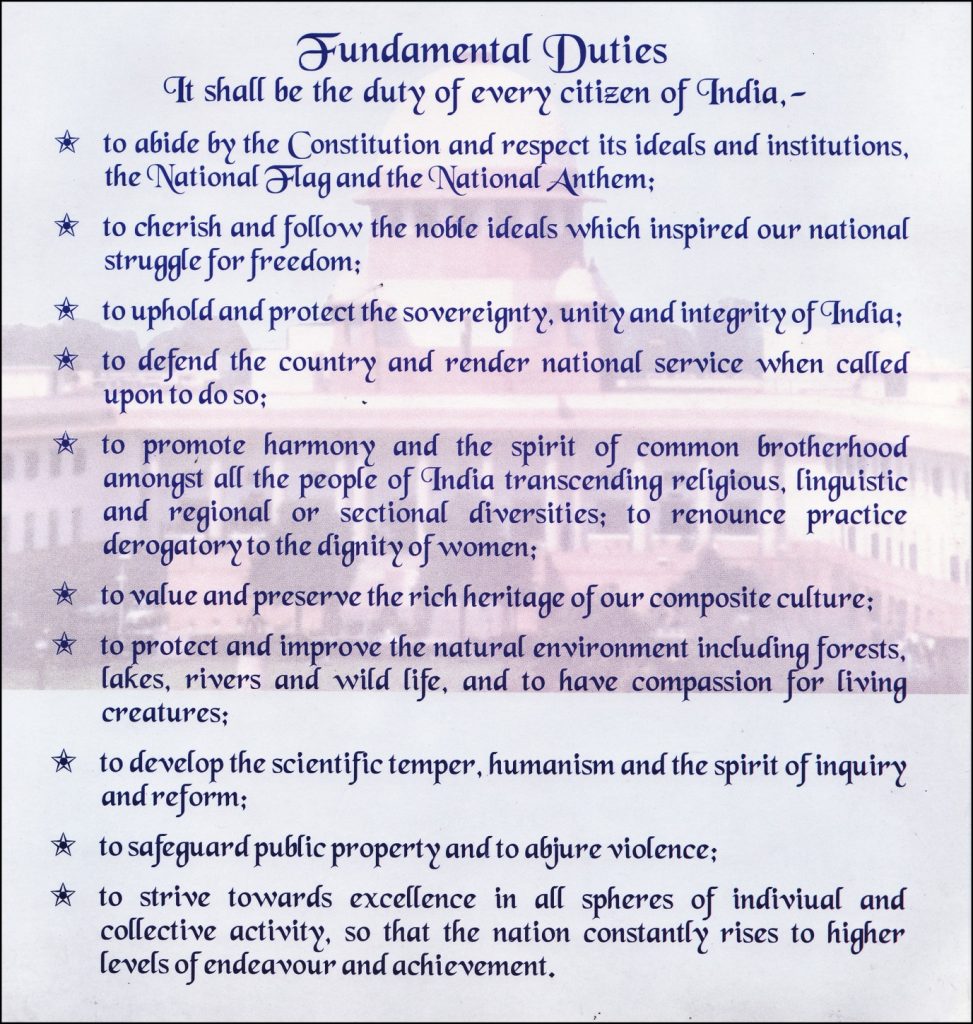The founder of the Chola Empire was Vijayalaya, who was first feudatory of the Pallavas of Kanchi. He captured Tanjore in 850 A.D. He established a temple of goddess Nishumbhasudini (Durga) there.
Aditya I succeeded Vijayalaya. Aditya helped his overlord the Pallava king Aparajita against the Pandyas but soon defeated him and annexed the whole of the Pallava kingdom.
By the end of the ninth century, the Cholas had defeated the Pallavas completely and weakened the Pandyas capturing the Tamil country (Tondamandala) and including it under their domination He then became a sovereign ruler. The Rashtrakuta king, Krishna II gave his daughter in marriage to Aditya.
He erected many Shiva temples. He was succeeded in 907 A.D. by Parantaka I, the first important ruler of the Cholas. Parantaka I was an ambitious ruler and engaged himself in wars of conquest from the beginning of his reign. He conquered Madurai from the Pandya ruler Rajasimha II. He assumed the title of Maduraikonda (captor of Madurai).
He, however, lost to the Rashtrakuta ruler Krishna III at the battle of Tokkolam in 949 A. D. The Cholas had to cede Tondamandalam to the adversary. At that point of time the Chola kingdom almost ceased to exist. It was a serious setback to the rising Chola power. The revival of Chola power began from the accession of Parantaka II who recovered Tondamandalam to reestablish dominance of the dynasty.
The climax in Chola power was achieved under the successor of Parantaka II, Arumolivarman, who crowned himself as Rajaraja I in 985 A D the next thirty years of his rule formed the formative periodof Chola imperialism.
The Chola kingdom grew under him into an extensive and well-knit empire, efficiently organized and administered and possessing a powerful standing army and navy. Rajaraja began his conquests by attacking the confederation between the rulers of the Pandya and Kerala kingdoms and of Ceylon. Polonnaruva became the capital of Chola province in North Ceylon after the defeat of Mahinda V, the Ceylonese king.
He also annexed the Maldives. Elsewhere, several parts of modern Mysore were conquered and annexed which intensified their rivalry with the Chalukyas. Rajaraja built the magnificent Shiva temple of Brihadeshwara or Rajaraja temple at Thanjavur which was completed in 1010. It is considered a remarkable piece of architecture in South Indian style.
Rajaraja I also encouraged Sri Mara Vijayottungavarman, the Sailendra ruler of Sri Vijaya to build a Buddhist Vihara at Negapatam. This vihara was called ‘Chudamani Vihara’ after the father of Sri Mara. Rajaraja was succeeded by his son Rajendra I in 1014 A.D. He ruled jointly with his father for a few years. He also followed a policy of conquest and annexation adopted by his father and further raised the power and prestige of the Cholas. He followed the expansionist policy and made extensive conquests in Ceylon.
The Pandya and Kerala country after being conquered was constituted as a viceroyalty under the Chola king with the title of Chola-Pandya. Madurai was its headquarters. Proceeding through Kalinga, Rajendra I attacked Bengal and defeated the Pala ruler Mahipala in 1022 A.D. But he annexed no territory in north India.
To commemorate the occasion, Rajendra I assumed the title of Gangaikondachola (the Chola conqueror of Ganga). He built the new capital near the mouth of the Kaveri and called it Gangaikondacholapuram (the city of the Chola conqueror of the Ganga).
With his naval forces, he invaded Malaya Peninsula and Srivijaya Empire that extended over Sumatra, Java and the neighbouring islands and controlled the overseas trade route to China. He sent two diplomatic missions to China for political as well as commercial purposes.
Rajendra was succeeded by his son Rajadhiraja I in 1044 A.D. He was also an able ruler. He put down the hostile forces in Ceylon and suppressed the rebellious Pandyas and subjugated their territory. He celebrated his victory by performing Virabhisheka (coronation of the victor) at Kalyani after sacking Kalyani and assumed the title of Vijayarajendra. He lost his life in the battle with the Chalukyan king Someswara I at Koppam. His brother Rajendra II succeeded him. He continued his struggle against Someswara.
He defeated Someswara in the battle of Kudal Sangamam. Next came Virarajendra I, he too defeated the Chalukyas and erected a pillar of victory on the banks of Tungabhadra. Virarajendra died in 1070 A.D. He was succeeded by Kulottunga I (1070-1122 A.D.) the great-grandson of Rajaraja I. He was the son of Rajendra Narendra of Vengi and Chola princess Ammangadevi (daughter of Rajendra Chola I). Thus Kulottunga I united the two kingdoms of the Eastern Chalukyas of Vengi and the Cholas of Thanjavur.
The most important reforms carried out by him in the internal administration was the re- surveyal of land for taxation and revenue purposes. He was also titled Sungam tavirtta (he who abolished tolls). The Chola authority in Ceylon was overthrown by Vijayababu, the monarch of Ceylon during Kulottunga’s reign. He sent a large embassy of 72 merchants to China and also maintained cordial relations with Sri Vijaya.
He defeated the rulers of the Pandya kingdom and that of Kerala. Thfe Chola Empire continued for more than a century after him. Weak rulers succeeded him. The Cholas and the later Chalukyas clashed for the overlordship of Vengi, the Tungabhadra doab and the Ganga country.
The Chola Empire continued in a flourishing condition during the twelfth century but declined by the end of the thirteenth century. The Pandyan king Sundara rendered the final blow by seizing Kanchi in 1297 A.D. The place of the Cholas was taken over by the Pandyas and the Hoysalas. This marked the end of the Chola power.
Architecture and Art
One of the largest empires in Indian history, that stretched till South East Asia, the Cholas used their immense wealth, in building magnificent temples and structures. It would be an understatement to call the architecture of the Chola period as grand, it was more like grandiose and towering. The sheer size of their temples, the towering vimanas, the sculpted walls, just every aspect of their monuments displayed grandeur. And of course nothing to beat the Brihadeswara Temple at Thanjavur, that is a benchmark by itself in architectural excellence.
Even if the Cholas, had not built anything else, just the Brihadeeswara Temple would have been enough. I mean just consider the facts, built fully of granite, finished within 5 years, that was quite fast for that period. And then you have the vimana that towers to around 216 ft, and this is just awe inspiring, on top of the tower, you have a kalasam, made out of a single block of stone, that weighs around 20 tonnes, and was lifted to the top using an inclined plane that covered 6.44 km from the ground to the top. The Cholas built big, their structures were meant to tower, to inspire awe, to take away the breath. It was not just the grand buildings, it was also the sculpture and art that adorned them, which was equally breath taking.
The other magnificient structures built by the Cholas, were the temple at Gangaikondacholapuram, which is next only to the Brihadeesvara temple at Tanjore, in size, grandeur and architectural excellence.
And also the Airavateswara temple at Darasuram, dedicated to Lord Shiva, and so called, because it is believed that the Shiva Linga here was worshipped by Indra’s elephant Airavat.
The Chola period also witnessed a glorious phase in bronze casting, and making of idols. The bronze idols of the Chola period, were more expressive in nature, and devoid of too many intricate ornaments or designs. The bronze idol of Nataraja, the dancing form of Shiva, represents the artistic excellence during that era.
Administration:
It was not just the fact that they built magnificent temples or made exquisite idols, the Cholas also came up with an excellent system of governance and administration. While it was a monarchy, like most other kingdoms of that era, there was a serious attempt to decentralize, and provide self government right at the local level. The empire was divided into provinces called Mandalams, and each of those Mandalams, further into Kottams, which again had districts, called Nadus, that had Tehsils usually a group of villages. While Tanjore and Gangaikonda Cholapuram were the main capitals, there also existed regional capitals at Kanchi and Madurai, where courts were occasionally held.
Their major achievement though was the local self government during their times, where villages had their own self governance. Depending on the area they covered, villages again could be Nadu, Kottram or Kurram, and a number of Kurrams made up a Valanadu. The village units had the power to administer justice at the local level, and for most crimes, fines were imposed, which went to the state treasury. Death penalty was given only for crimes that amounted to treason.
Economy
Chola period had a robust and thriving economy, that was built on 3 tiers. At the local level, it was agricultural settlements, that formed the foundation, on top of this you had the Nagarams or the commercial towns, that primarily acted as centers of distribution for items produced externally and by local artisans for international trade. The top most layer was made of “samayams” or merchant guilds, who organized and looked after the thriving international maritime trade. With agriculture being the occupation of a large number of people, land revenue was a major source of income to the treasury. The Cholas also built a large number of tanks, wells, and a large number of channels to distribute water. They had also built stone masonry dams over the Kaveri, and there was a thriving internal trade going on too.
Naval and Maritime Trade.
The Chola period would be noted for it’s emphasis on maritime trade and conquest, they excelled in ship building. While they had a strong internal maritime system, the Imperial Chola Navy came into existence during the reign of Raja Raja Chola I, who strengthened it. Raja Raja Chola’s use of the Navy to subdue the Sinhalese king Mahinda, would be one of the greatest naval victories ever. Another major achievement was the conquest of the Sri Vijaya kingdom under Sailendra, now in Indonesia, by Raja Raja Chola’s successor Rajendra Chola. Having possesion of the East and West coasts of India, the Cholas had a thriving international trade with the Tang dynasty in China, the Srivijaya empire in Malayan archipelago and the Abbasid Caliphate in Baghdad. The Cholas also combated sea piracy succesfully in the Malayan archipelago, and had a close trade with the Song dynasty in China, that led to advances in ship building.
While the King was the supreme commander of the Navy, it had a highly organized structure, that was divided into Ganams a Fleet squadron, usually commanded by a Ganapathy. And there was a hierarchical ranking structure, below the King, that consisted of Jalathipathi(Admiral), Nayagan( Fleet Commander), Ganathipathy(rear admiral), Mandalathipathy(vice admiral) and Kalapathy( the ship captain). You also had separate departments for customs excise(Thirvai), inspection and audits( Aaivu) and an intelligence corps( Ootru). The Cholas also had their own coast guard equivalent in Karaipiravu. And this would be one of their finest achievements, building a world class naval structure.
Literature
Often called as the Golden Age of Tamil culture, it was one of the greatest literary eras in history equivalent to the Elizabethean reign in England or the Guptas in Northern India. Nambi Andar collected the various works on Saivism and arranged them into eleven books called Tirumurais, and another great work of literature was the adaptation of the Ramayana into Tamil by Kamban, called as the Ramavatharam. The period also saw excellent works on Tamil grammar like Yapperungalam by Jain ascetic and Virasoliyam that attempts to find a balance between Tamil and Sanskrit grammar by Buddhamitra.



